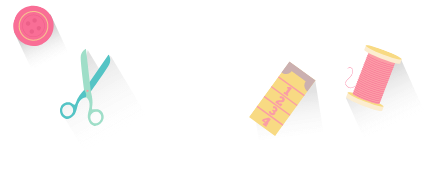Categories
Understanding Thread Tension
![]() Hatch
Blog | How to
Hatch
Blog | How to
April 3rd, 2024
6 minute read
Don't let your threads play tug-of-war!
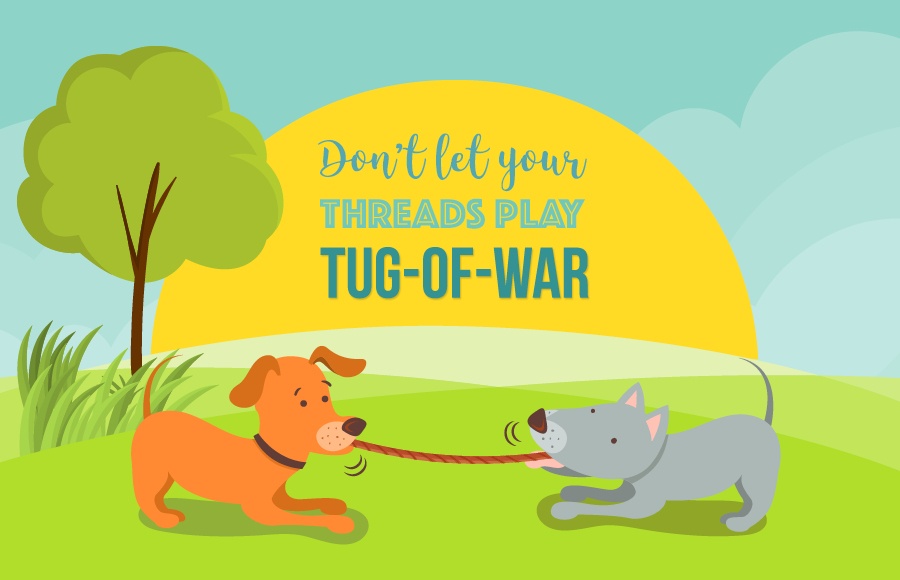
As an embroiderer, you aspire to create stunning end results, whether you're pursuing it as a hobby, semi-professionally, or professionally. Numerous factors play into the outcome of your embroidery when it emerges from your machine. We've extensively discussed selecting the appropriate needles, fabrics, and threads in previous posts on our blog.
In this article, we delve into the importance of understanding thread tension and its impact on the final outcome of your machine embroidery. We explain how thread tension can significantly influence the appearance of your embroidery and provide guidance on how to assess whether your machine is set to the optimal tension. Additionally, we offer insights on adjusting your top thread to ensure impeccable final results.
Top Thread vs. Bobbin Thread
Understanding thread tension begins with grasping how the two threads—your bobbin thread and your top embroidery thread—collaborate in your machine. To get a better understanding, take a look at this helpful video below that demonstrates the inner workings of a sewing machine. The principles depicted in the video apply equally to your embroidery machine. By watching it, you'll gain valuable insight into how thread tension influences the creation of stunning embroidery designs.
Take a moment to explore the infographic below, which illustrates the dynamic relationship between the bobbin thread and the top thread in your embroidery machine. Picture it as if the two threads were engaged in a friendly game of tug-of-war. This tug-of-war isn't a negative aspect; in fact, it's crucial for achieving the perfect stitch. For a secure lock and seamless embroidery, both threads need to maintain a slight tension. However, it's essential to strike the right balance between them. Too much tension from either side can lead to issues like thread breakage or fabric distortion. Finding that sweet spot where both threads work harmoniously is key to achieving high-quality embroidery results.
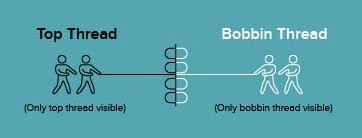
How Can I Tell if My Thread Tension Is Right?
Once you have done your test stitch-out, you need to have a look at the back of your fabric and check how much of the top thread was pulled through it. The result will indicate if the tension of the top thread is too loose, too tight, or just right.

Understanding Thread Tension Adjustments for My Machine?
When it comes to adjusting thread tension on your machine, it's essential to know how to make those tweaks for optimal embroidery results. Start by examining the back of your fabric after doing a test stitch-out. If you notice that the top tension is either too loose, causing loops or puckering, or too tight, leading to thread breakage or the fabric being pulled too tightly, it's time for adjustments.
The good news is that most modern embroidery machines come equipped with dials or knobs that allow you to adjust the tension of the top thread easily. While it's technically possible to adjust the tension of the bobbin thread as well, it's typically the tension of the top thread that needs the most attention.
To make these adjustments, refer to the dial(s) located on your machine. Typically, turning the dial clockwise tightens the tension, while turning it counterclockwise loosens it. However, each machine may have its own specific instructions, so it's essential to consult your machine's manual for guidance.
To simplify this process, we've created an infographic that illustrates step-by-step instructions on how to adjust the tension of the top thread on your machine. This visual guide will walk you through the process, making it easy to achieve the perfect tension balance for your embroidery projects.
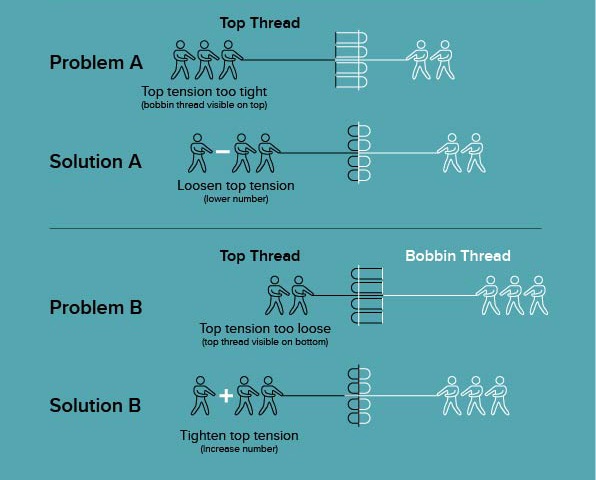
In summary, the quality of your embroidery depends on maintaining a balance between the tension of the bobbin thread and the top embroidery thread. Usually, it's the top thread that's adjusted to achieve this balance, ensuring both threads pull evenly, like in a tug-of-war.
Understanding thread tension is crucial because it also impacts how much the thread pulls on the fabric, which can lead to distortions. In our next article, we'll delve into this issue and explore how to use pull compensation to prevent it. Stay tuned!
We hope you learned something about understanding thread tension. Please let us know how useful you found this article by joining our amazing Hatch Facebook group. You can meet thousands of other happy and successful Hatchers and trade ideas and tips with them.
Happy Embroidering
Bernadett and the Hatch Team
Hatch Embroidery software has emerged as a top choice among embroidery enthusiasts and small business owners worldwide. Trusted by users in over 100 countries, it's swiftly become a leading solution in the embroidery software landscape. Whether you're a hobbyist looking to explore new creative avenues or a small business owner seeking to streamline your embroidery processes, Hatch Embroidery offers a range of powerful features to meet your needs. Join the global trend and experience the innovation and versatility of Hatch Embroidery for yourself!
The 30-Day Free Trial gives you unlimited use of all the amazing features and the 30-Day Money-Back Guarantee ensures that there is absolutely no risk involved.
Hatch Embroidery 30-Day Money-Back Guarantee:
At Hatch Embroidery, we understand the importance of confidence and satisfaction when investing in embroidery software. That's why we offer a 30-day money-back guarantee on all our software products. This guarantee allows customers to explore the features and capabilities of Hatch Embroidery software risk-free for a full month. If for any reason you're not completely satisfied with your purchase, you can request a refund within 30 days of the original purchase date.
Benefits for you:
Risk-Free Trial: The 30-day money-back guarantee provides you with a risk-free opportunity to try out Hatch Embroidery software. You can explore its features, experiment with designs, and evaluate its suitability for your needs without any financial risk.
Peace of Mind: Knowing that you have the option to request a refund within the specified timeframe provides you with peace of mind. You can make your purchase with confidence, knowing that if the software doesn't meet your expectations, you're covered by the money-back guarantee.
Flexibility: The money-back guarantee offers flexibility in your decision-making process. It removes any barriers or hesitations you may have about trying out the software, as you can easily request a refund if it doesn't meet your requirements.
Customer Satisfaction: By offering a generous return policy, we prioritize your satisfaction and aim to ensure that you and every customer have a positive experience with Hatch Embroidery software. Our commitment to customer satisfaction extends beyond the initial purchase, reinforcing our dedication to providing high-quality products and excellent service.
Overall, the Hatch Embroidery 30-Day Money-Back Guarantee is designed to empower you to make informed decisions and confidently invest in our software, knowing that your satisfaction is our top priority.
Understanding Thread Tension
Related Articles

10 Paw-fect Embroidered Christmas Gifts For Your Furry Friends
4 minute read
April 3rd, 2024
Don’t let your pets miss out on celebrating Santa-Paws! Hatch Embroidery Software together with your... more »
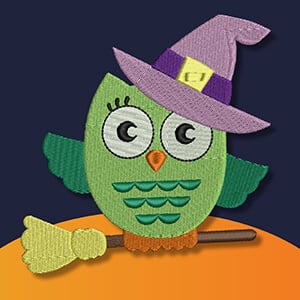
Spooktacular Designs Using Hatch Embroidery – FREE Halloween Designs
5 minute read
April 3rd, 2024
Special features and stitch effects that will take your embroidery to the next level It is so easy to take... more »

Personalized Christmas Gifts For A More Festive Holiday Season
4 minute read
April 3rd, 2024
DIY ideas you can easily embroider to make your present even more special The festive season is... more »
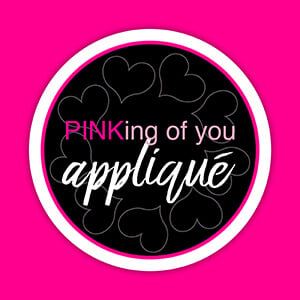
PINKing of You – FREE Embroidery Design & Video
8 minute read
April 3rd, 2024
Supporting the Breast Cancer Awareness Campaign by the American Breast Cancer Foundation We continue to find... more »
